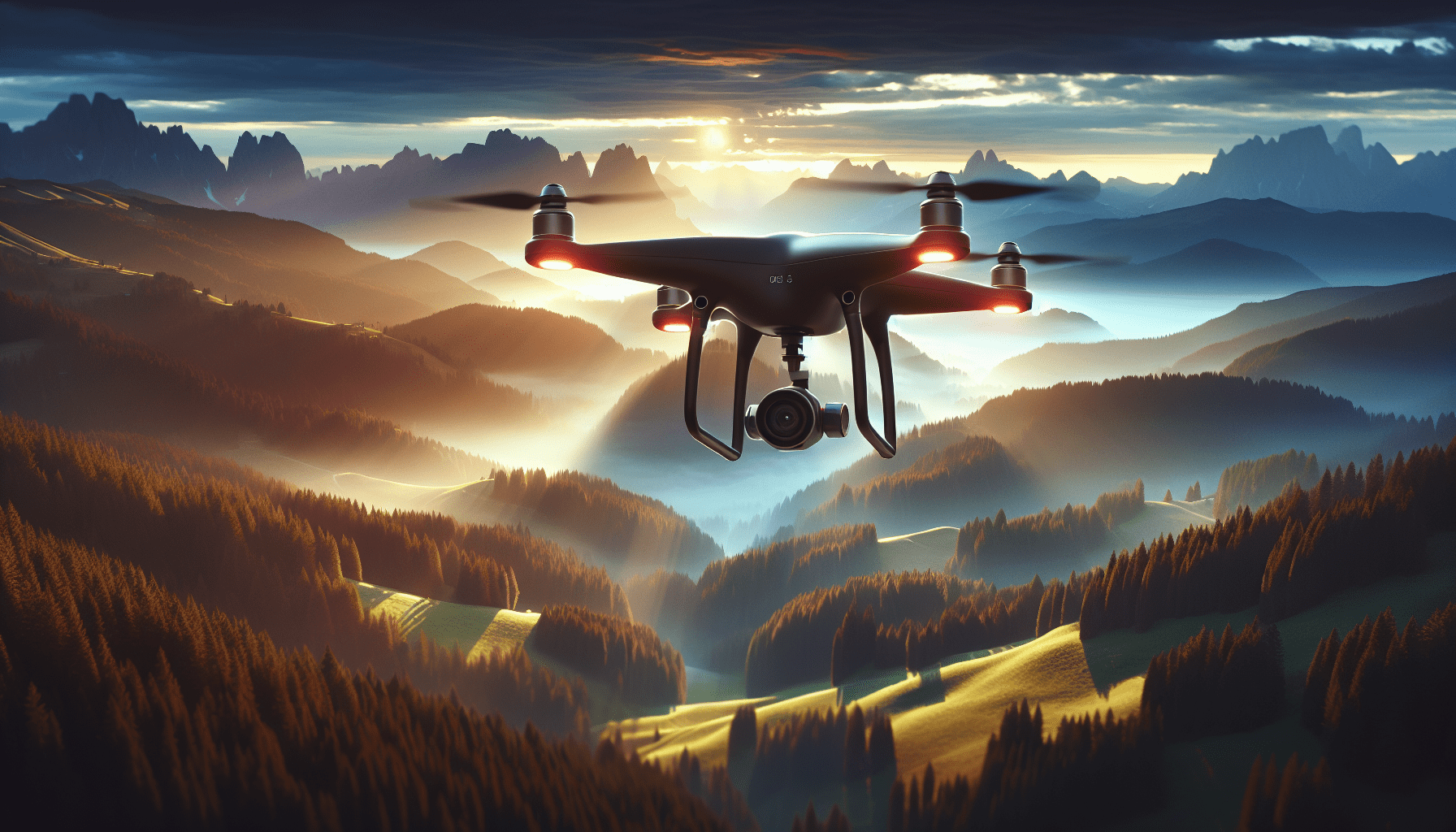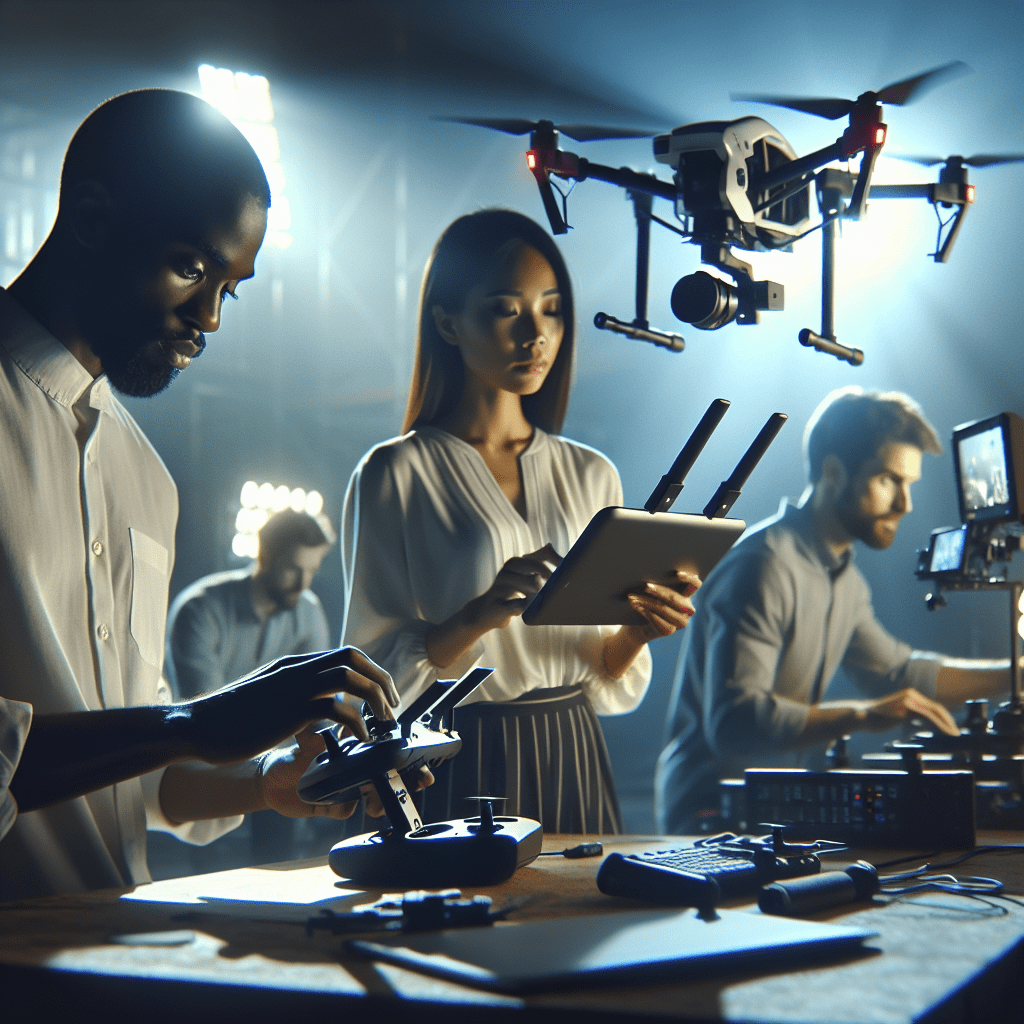Narrative Filmmaking with Drones: Maximising Visual Storytelling
As narrative filmmaking continues to evolve, the advent of drone technology offers filmmakers an unprecedented tool to enhance visual storytelling. Drones allow for the capture of breathtaking aerial shots that were once limited to expensive helicopter rentals or intricate rig setups. By seamlessly integrating drone footage into your film, you can create a rich tapestry of visuals that enhance character development, thematic depth, and overall cinematic experience. Drones can establish a sense of place, convey scale, and showcase landscapes that ground your audience in the narrative, making it a vital tool for modern storytellers.

The Importance of Aerial Perspective
In narrative filmmaking, perspective plays a crucial role in storytelling. Aerial shots can introduce an expansive landscape, immediately immersing the audience in the film’s world, whether it’s a bustling city or a serene countryside. This broader context not only serves to set the scene but also helps the viewer understand the relationship between characters and their environment. For instance, consider a scene in a drama where a character is journeying through a vast forest. An aerial shot can illustrate their isolation and vulnerability, amplifying the emotional impact of the narrative.
Developing a Strong Visual Language
When embracing narrative filmmaking with drones, establishing a clear visual language is essential. This includes consideration for shot types, framing, and movement. Use wide-angle shots to convey the majesty of a landscape, while medium shots can provide a more intimate glimpse into a character’s emotional state. Drones allow for smooth, sweeping movements that can guide the audience’s gaze and create a dynamic visual flow. For instance, slowly ascending over a character can symbolise their personal journey and growth, aligning the audience emotionally with the narrative’s progression.
Creating Cinematic Drone Footage
To make drone footage look good and cinematic, filmmakers must focus on several critical aspects. The quality of the drone itself, shooting techniques, and post-production processes play pivotal roles in achieving stunning results. High-quality drone cameras offer greater resolution and frame rates, contributing to the cinema-like quality of the footage. Moreover, mastering techniques such as slow and controlled movements can enhance the dramatic effect of the shots, creating a smoother flow that is visually appealing.
“To elevate your storytelling with drones, establishing a compelling visual style is paramount.”
Leveraging Dynamic Camera Movements
Cinematic storytelling thrives on movement, and drones provide unique opportunities to explore various dynamic movements that enhance narrative filmmaking. Panning, tilting, and tracking shots can weave through a scene, guiding the viewer’s eye towards critical elements. For example, a drone swooping down to follow a character running towards a destination introduces urgency and pace to the narrative. Transitioning smoothly between different types of shots can also build tension or excitement within the storytelling arc, ensuring that every frame serves a purpose.
Utilising Natural Light and Weather Conditions
The time of day and weather conditions significantly influence the mood and tone of your drone footage. Filmmakers should carefully consider shooting during golden hour for warm, flattering light that enhances the cinematic quality of their visuals. Overcast days can offer a soft, diffused light, perfect for dramatic scenes. Understanding how to work with natural elements allows for greater creativity in narrative filmmaking, enabling storytellers to harness the atmosphere to reflect a character’s emotional journey. For instance, using dark clouds and rain can create a foreboding mood, aligning the visuals with the unfolding narrative.
The Practicalities of Drone Usage in Filmmaking
While the creative possibilities are endless, practical considerations also play a critical role in narrative filmmaking with drones. Understanding the regulations and safety measures surrounding drone usage is essential for any filmmaker. Each country has its own rules regarding drone flights, especially near populated areas or sensitive environments. Filmmakers must educate themselves on these laws to ensure compliance and safety during shooting. Furthermore, investing in proper training for drone operation will improve control and manoeuvrability, resulting in better footage.
Investment vs. Value
How much does a drone cost for filming is a question many filmmakers grapple with. Drone prices can range widely based on features, capabilities, and brand. For those beginning in narrative filmmaking or on a budget, there are affordable options that still provide excellent results. Entry-level drones often possess 1080p cameras and stabilisation features, allowing filmmakers to experiment without a hefty investment. It’s crucial to weigh the cost against the value and intended use; higher-end drones may offer 4K video, increased battery life, and advanced stabilisation systems that can significantly enhance production quality.
Equipment Setup and Maintenance
Maintaining your drone ensures its longevity and performance. Regularly check the battery, propellers, and camera for any signs of wear or damage. Routine inspections can prevent issues during production days, avoiding frustrating delays. Additionally, understanding the drone’s settings and capabilities can be beneficial, allowing for optimal shooting conditions tailored to specific narrative requirements. For example, utilising the drone’s various flight modes can enhance shooting precision and artistic expression, facilitating a more profound storytelling experience.
Post-Production Techniques for Drone Footage
No narrative filmmaking is complete without thoughtful post-production. After capturing aerial shots, editing becomes crucial in blending drone footage seamlessly with the rest of the film. Colour grading can significantly impact the mood and tone, enabling the creation of a cohesive visual palette throughout the narrative. Consider matching the drone footage’s colours to the ground shots to achieve a uniform look and feel. Additionally, the use of sound design can amplify the emotional impact of aerial scenes, reinforcing the visual narrative.
Editing for Flow and Continuity
Editing is where the story comes together, and ensuring a smooth flow between drone shots and traditional footage can enhance the overall cinematic quality. Transition effects, such as crossfades or dynamic cuts, can bridge the gap between different perspectives. Filmmakers should be mindful of pacing as well; drone shots can establish context, while tighter shots often centre on characters’ emotions. Striking the right balance between these shot types is essential for effective storytelling in narrative filmmaking.
Audio Design and Soundscapes
The integration of audio design further enriches drone footage in narrative filmmaking. While visuals may capture the audience’s attention, sound supports the emotional undertone of scenes. Consider incorporating ambient soundscapes that reflect the environment captured by drone shots. For instance, a sweeping shot over a tranquil lake can be accompanied by soft, soothing sounds of water and wildlife instead of orchestral music, enhancing audience immersion and grounding them in the depicted reality. Taking the time to develop sound design can uplift your storytelling considerably, adding layers to the overall narrative experience.
Exploring Storytelling with Drones
Storytelling with drones is not just about capturing stunning visuals; it’s about crafting a narrative that resonates with audiences. Incorporating aerial perspectives into your stories allows for greater expression and emotional depth. It invites viewers to experience the world from a thrilling angle, sparking imagination and fostering connection. As a storyteller, understanding how to leverage drone technology will propel your narrative filmmaking to new heights.
Case Studies of Successful Drone Integration
To illustrate the power of drones in narrative filmmaking, consider studying successful films that have used aerial shots creatively. For instance, the acclaimed film “Skyfall” features spectacular aerial scenes over the Scottish Highlands, immersing the audience not only in the action but also in the breathtaking scenery that echoes themes of isolation and legacy. Filmmakers can take lessons from such examples, analysing how perspective and visual language contribute to the narrative.
Future Trends in Drone Filmmaking
As technology continues to advance, it’s imperative for filmmakers to stay updated on innovations in the drone industry. The introduction of AI-driven shooting techniques and improved stabilisation technology are poised to further revolutionise narrative filmmaking. An understanding of these trends can arm storytellers with new methods to engage and captivate audiences, continuing to evolve the craft of filmmaking. Whether you’re a seasoned filmmaker or just beginning your journey, harnessing the capabilities of modern drones will be invaluable for impactful storytelling.
Conclusion: The Future of Narrative Filmmaking with Drones
Drones are transforming narrative filmmaking, offering filmmakers a toolkit brimming with creative possibilities. They empower storytellers to establish context, develop emotional landscapes, and captivate audiences through immersive aerial perspectives. The key to utilising drones effectively lies in blending cutting-edge technology with fundamental storytelling principles—focusing on character, themes, and emotional resonance. Filmmakers must embrace the potential of drones, continuously refining their craft to ensure their stories resonate deeply with viewers. Explore our range of drones perfect for filmmakers and elevate your storytelling today!
Frequently Asked Questions
What are the benefits of using drones in narrative filmmaking?
- Drones offer dynamic perspectives and flexibility in capturing scenes, enhancing the storytelling with unique aerial views and smooth movements.

